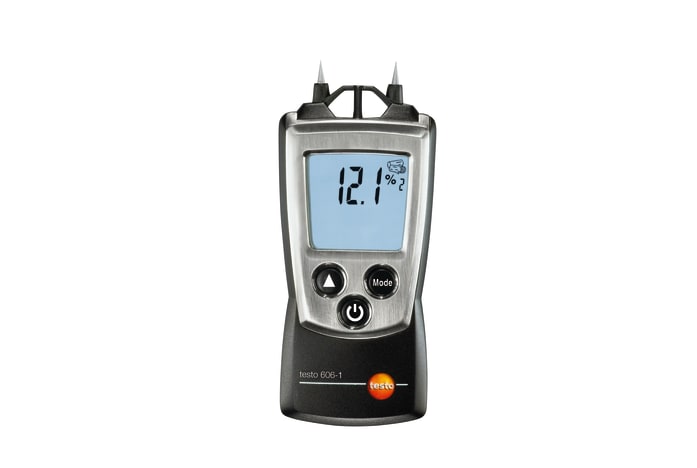Just How a Moisture Meter Can Enhance Your Construction Projects and Prevent Damages
Just How a Moisture Meter Can Enhance Your Construction Projects and Prevent Damages
Blog Article
Explore the Globe of Moisture Meters: Whatever You Need to Know
In the realm of moisture meters lies a world of precision and usefulness that commonly goes unnoticed. These gadgets, while relatively straightforward, hold a wealth of details that can dramatically impact various sectors and applications. Comprehending exactly how moisture meters operate, the various kinds readily available, and their diverse uses can drop light on their value in making sure quality and effectiveness. By exploring the details of wetness meters, one can reveal a useful tool that transcends mere dimension, providing understandings that can make a significant distinction in numerous fields.
Just How Moisture Meters Work
Moisture meters operate by gauging the electrical conductivity or capacitance of materials to identify the dampness material present. These meters are vital devices throughout various markets, including woodworking, building, and agriculture. By using different methods such as pin-type or pinless innovation, moisture meters provide precise readings that assist professionals make educated choices.
Pin-type wetness meters function by putting the sharp pins into the material being examined. On the various other hand, pinless dampness meters use electromagnetic signals to scan a bigger location without creating any type of damage to the material's surface area.
No matter of the approach utilized, wetness meters play a crucial role in avoiding issues such as mold development, structural damage, or item flaws triggered by excess wetness. Recognizing exactly how these meters job is important for making certain the high quality and stability of materials in different applications.
Kinds Of Moisture Meters
Given the vital duty wetness meters play in various industries, it is important to recognize the various types offered to experts for properly analyzing wetness degrees - Moisture Meter. There are mainly two primary kinds of wetness meters: pin-type and pinless dampness meters

On the other hand, pinless dampness meters make use of electromagnetic sensor plates to check a larger area of the product without causing any damages. This type is appropriate for quickly scanning big areas and is frequently made use of for flooring, wall surfaces, and ceilings. Pinless meters are convenient for taking analyses on finished surface areas without leaving any type of visible marks.
Both sorts of dampness meters have their benefits and are picked based upon the specific requirements of the work at hand. Understanding the distinctions between these kinds is vital for experts to make precise wetness evaluations.
Applications Across Industries
Building experts count on wetness meters to assess the moisture levels in structure products like concrete, drywall, and wood, which is crucial for preserving architectural honesty and preventing problems like rot or mold. The flooring sector uses wetness meters to gauge the wetness web content in subfloors prior to setting up different floor coverings, stopping pricey damages due to excess moisture. In the food sector, wetness meters are made use of to keep an eye on and manage moisture levels in products such as grains, nuts, and dried fruits to keep freshness and high quality.
Tips for Utilizing Moisture Meters
Use the dampness meter's calibration settings to make certain exact readings when determining the dampness web content in different products. Calibration is important for the correct performance of a wetness meter. Prior to each use, it is suggested to check and readjust navigate here the calibration setups according to the specific product being tested. In addition, make certain the meter is readied to the correct dampness variety for the material you are measuring to acquire one of the most exact outcomes.
When utilizing a pin-type moisture meter, place the pins to the proper depth recommended for the material being checked. This ensures that the dampness analyses are extracted from the appropriate depth within the material, giving here are the findings a more precise representation of its moisture web content. For pinless moisture meters, bear in mind to keep correct call with the material's surface to get trusted analyses.
On a regular basis examine and change the batteries in your moisture meter to stop incorrect analyses as a result of reduced power. When not in usage to extend its life-span and keep its accuracy, Shop the meter in a dry and secure area. By following these tips, you can maximize the performance of your wetness meter and get accurate wetness web content measurements across different products.
Maintenance and Calibration
To ensure the precision of dampness content measurements, routine upkeep and calibration of the moisture meter are essential steps in its proper functioning. Maintenance entails maintaining the dampness meter totally free and clean from particles that can impact its analyses. It is very important to follow the maker's standards for cleaning to prevent damages to the gadget. Additionally, routine calibration is necessary to confirm the precision of the readings. Calibration readjusts the moisture meter to guarantee that it provides dependable and constant outcomes.
Calibration ought to be done occasionally, especially if the moisture meter is used frequently or in vital applications where precise measurements are required. By keeping and adjusting the moisture meter routinely, individuals can rely on the precision of the moisture web content dimensions gotten.
Verdict

In verdict, moisture meters play an important role in numerous markets by properly gauging site link the wetness material of products. Comprehending exactly how these devices function, the different types available, and appropriate upkeep and calibration are essential for acquiring dependable outcomes. Whether in production, farming, or construction, using dampness meters aids ensure quality assurance and effectiveness in processes.

In conclusion, wetness meters play an essential duty in different markets by properly measuring the dampness web content of products.
Report this page